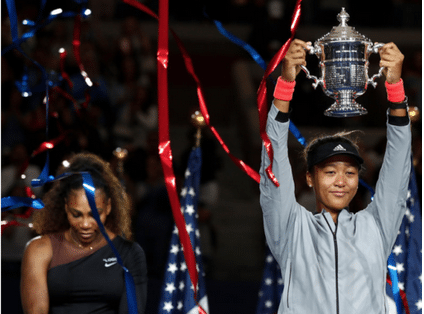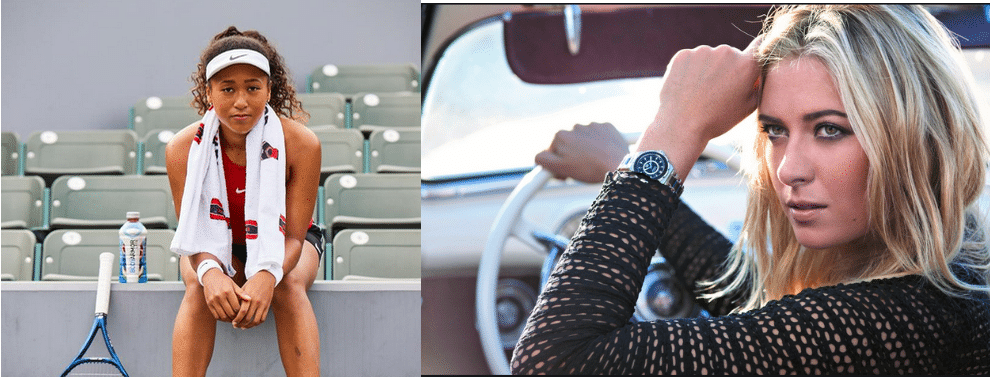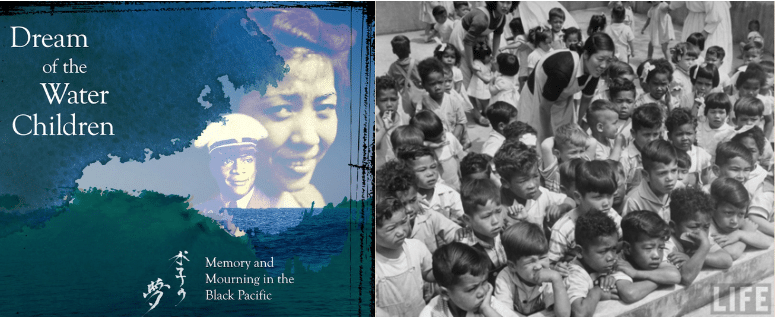For nearly two decades, Serena Williams reigned atop the world of women’s tennis. Even when injuries (and then a pregnancy) forced her to cede her top ranking, nobody doubted that a recovered Williams would still be the best player in the world.
We saw many pretenders to her throne come and go. Most notable among them, of course, was Maria Sharapova.
But then along came Naomi Osaka. And here in part is how I hailed her as Serena’s heir apparent in “US Open: Serena’s Upset with Umpire Overshadowed Naomi’s Upset of Her,” September 9, 2018:
_________
One has to wonder if Naomi Osaka is the second coming of Serena Williams, who will dominate the game for the next decade or more; or if she’s just another one-slam wonder, like Sloane Stephens, who will soon fade away.
I think Naomi is the former, and I look forward to watching her surpass Serena.
_________
This Covid-19 lockdown is bound to have a disparate impact on older players like Williams (38). Indeed, Naomi’s upset victory in their September 2018 match might end up marking the end of Williams’s quest to win a record-breaking 24 Grand Slam singles titles.
Meanwhile, Osaka just further sealed her seed by dethroning “ice queen” Sharapova in the earnings game too. As it happens, Williams never disguised her wish to win this title. But it’s the one that eluded her every single year of her illustrious career.
[T]he 22-year-old ace has beaten her legendary rival once again, this time for bragging rights as the highest-paid female athlete in the world.
Osaka earned $37.4 million the last 12 months from prize money and endorsements, $1.4 million more than Serena, setting an all-time earnings record for a female athlete in a single year; Maria Sharapova previously held the record with $29.7 million in 2015.
(Forbes, May 22, 2020)
Game. Set. Match? Ka-ching!
Black or Asian or Both…
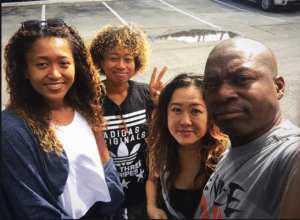 In the commentary cited above, I addressed two curiosities about Naomi:
In the commentary cited above, I addressed two curiosities about Naomi:
- Why she uses her Japanese mother’s last name instead of her Haitian father’s.
- Why she’s likely to give up her US citizenship to play for Japan.
I answered the first; here’s confirmation on the second:
Naomi Osaka, the 2018 U.S. Open champion and the world’s third-ranked tennis player, will give up her U.S. citizenship to represent Japan in the Summer Olympics next year in Tokyo.
(The Washington Post, October 19, 2019)
Conspicuously, though, I spared her any commentary on how she self-identifies racially. Perhaps I thought those two issues were polarizing enough for a 20-year old, especially one who had just made such a shocking and controversial debut on the world stage.
For her part, Osaka has been deftly silent on this issue. That explains reports like this:
One must search very hard for a news article describing Osaka as ‘Black,’ despite her Haitian father. Even then, news outlets painstakingly describe her as ‘half-Haitian’ or the daughter of a ‘Japanese mother’ and a ‘Haitian’ or ‘Haitian-American’ father.
(Jackson Sun, January 31, 2019)
But, as oxymoronic as it might seem, this lockdown appears to have freed her mind. Because, reportedly “finding ways to kill her boredom during self-quarantine,” here is how she “settled” the matter on Instagram:
‘Been in the house all day, so ask me a question,’ wrote Osaka on Wednesday.
‘Can you explain your ethnicity? I am a bit confused,’ asked a fan.
‘Ethnicity: I am Black and Asian. It’s not that confusing,’ Naomi replied.
(Essentially Sports, March 19, 2020)
Oh, the naivete (or amusing guile) of youth!
 Incidentally, her glib reply might cause some to question why Black and Asian Tiger Woods didn’t give that same answer. No doubt you recall the world of racial trouble he got into when he tried to identify as “Cablinasian.”
Incidentally, her glib reply might cause some to question why Black and Asian Tiger Woods didn’t give that same answer. No doubt you recall the world of racial trouble he got into when he tried to identify as “Cablinasian.”
Whether ’tis easier to identify as biracial in Japan or the United States? That is a question too complicated to answer in this forum. Not to mention that, even though she has chosen to play for Japan, Osaka will probably choose to live (primarily) in the United States.
Still, I feel compelled to state that one can hardly blame her eschewing the American custom of identifying solely as Black if either parent is Black. This, especially considering that the vast majority of her sponsors are Japanese (“cash” me outside the USA…?).
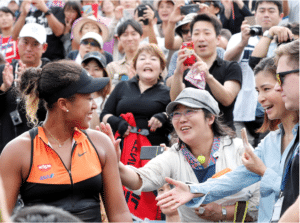 But identifying as half-Black Japanese means that Osaka will be virtually standing alone against sorry-not-sorry racist crap like this:
But identifying as half-Black Japanese means that Osaka will be virtually standing alone against sorry-not-sorry racist crap like this:
Osaka has faced prejudice in Japan, where there have been bullying incidents involving ‘haafu,’ or half-Japanese people. She recently was declared to be ‘too sunburned’ by two Japanese comedians who said she ‘needed some bleach. …
Last winter, the Japanese noodle company Nissin acknowledged ‘whitewashing’ Osaka in an ad that was taken down after a public outcry.
(The Washington Post, October 10, 2019)
Then again, it’s not as if Williams lives in a Shangri La racial harmony in the United States. But I digress…
Beyond banking lucrative endorsement deals, Osaka’s popularity might shed light on one of Japan’s dark secrets. You are probably aware that Japanese soldiers systematically raped tens of thousands of “comfort women” in China, Korea, and other occupied territories between 1932 and 1945. These still-unresolved war crimes have left an indelible stain on Japan’s national character.
What you may not know is that American soldiers sought comfort in the bosoms of thousands of Japanese women between 1945 and 1952. As a result, they fathered and left behind many Black Japanese (and other children of mixed race). Japan’s mistreatment of these children has left a similar, even more conspicuous, stain.
According to the April 27, 2016, edition of The Korea Herald, “hard knock lives” describe those of children fathered by white American soldiers with Korean women they left behind. Therefore, just imagine the lives of children fathered by Black American soldiers with the Japanese women they left behind.
These are the Black Japanese for whom Osaka can be a source of considerable pride. Indeed, it is entirely reasonable to assert that she might imbue them with the kind of racial pride Jackie Robinson imbued black Americans with during the racially oppressive days of the 1950s.
So here’s to Osaka inspiring, indeed emboldening all mixed-race Japanese to come out of the shadows over there. This, instead of thinking validation of who they are can only come by making their way over here.
It’s ‘Shara-po-va’
When Sharapova retired earlier this year, Tennis.com duly published her farewell statement (on February 26) – complete with a section headlined “The World Reacts to Sharapova’s Retirement.”
 Tellingly, that section featured only a pitiful number of farewell tweets, including one from a journalist, the Rafa Nadal Academy (not the player himself, mind you), a top 40 men’s player nobody’s ever heard of, and the irrepressibly classy Billie Jean King.
Tellingly, that section featured only a pitiful number of farewell tweets, including one from a journalist, the Rafa Nadal Academy (not the player himself, mind you), a top 40 men’s player nobody’s ever heard of, and the irrepressibly classy Billie Jean King.
Conspicuously, it did not feature a single tweet from any of Sharapova’s top competitors on the women’s tour. In fact, it was an open secret that she had alienated practically every one of them with her surly imperiousness over the years.
Therefore, this snub should not have surprised anybody. Indeed, they called Sharapova the ice queen because she seemed frozen even when it came to common professional courtesies.
Related commentaries:
Serena’s upset…
Serena’s quest…
